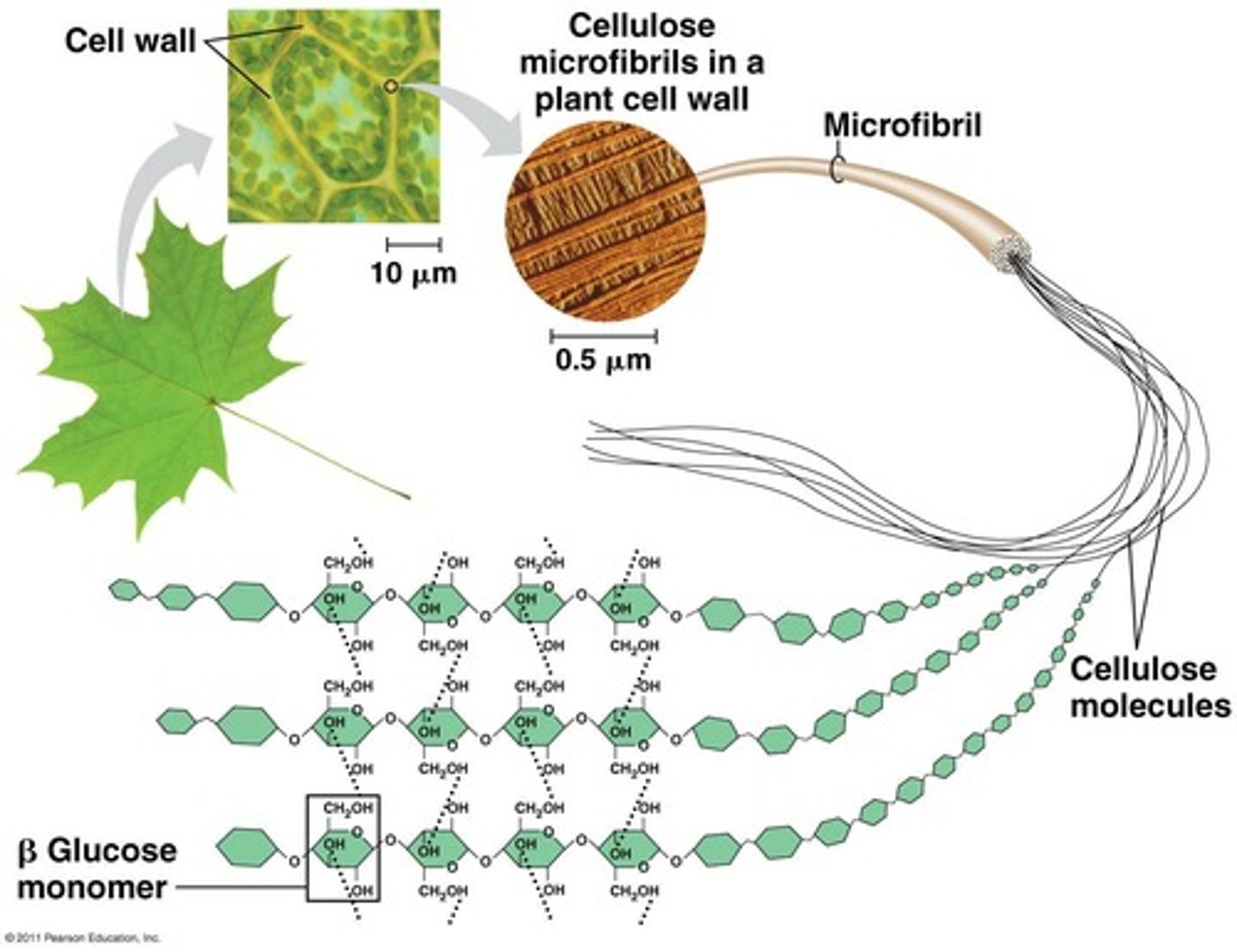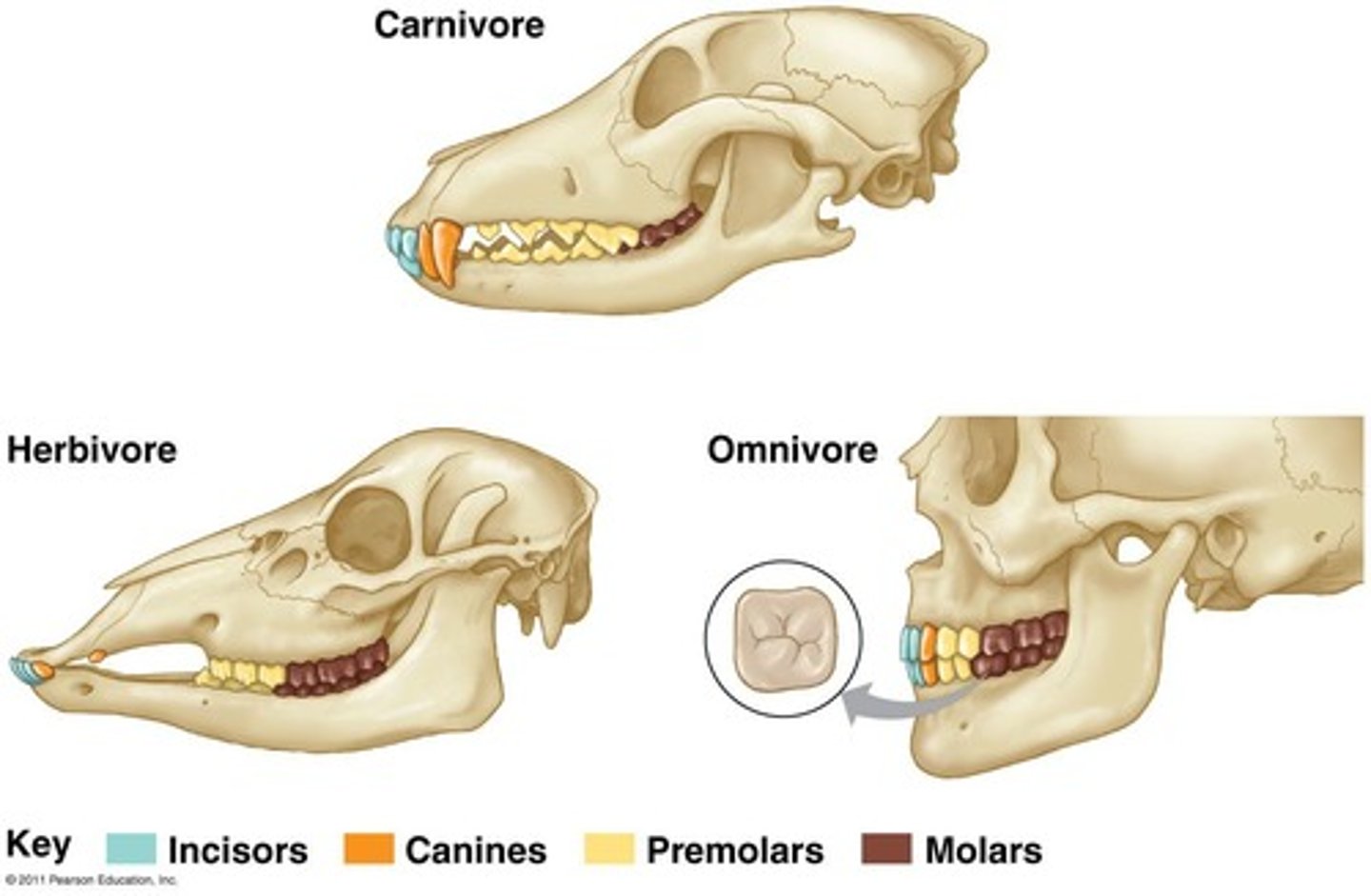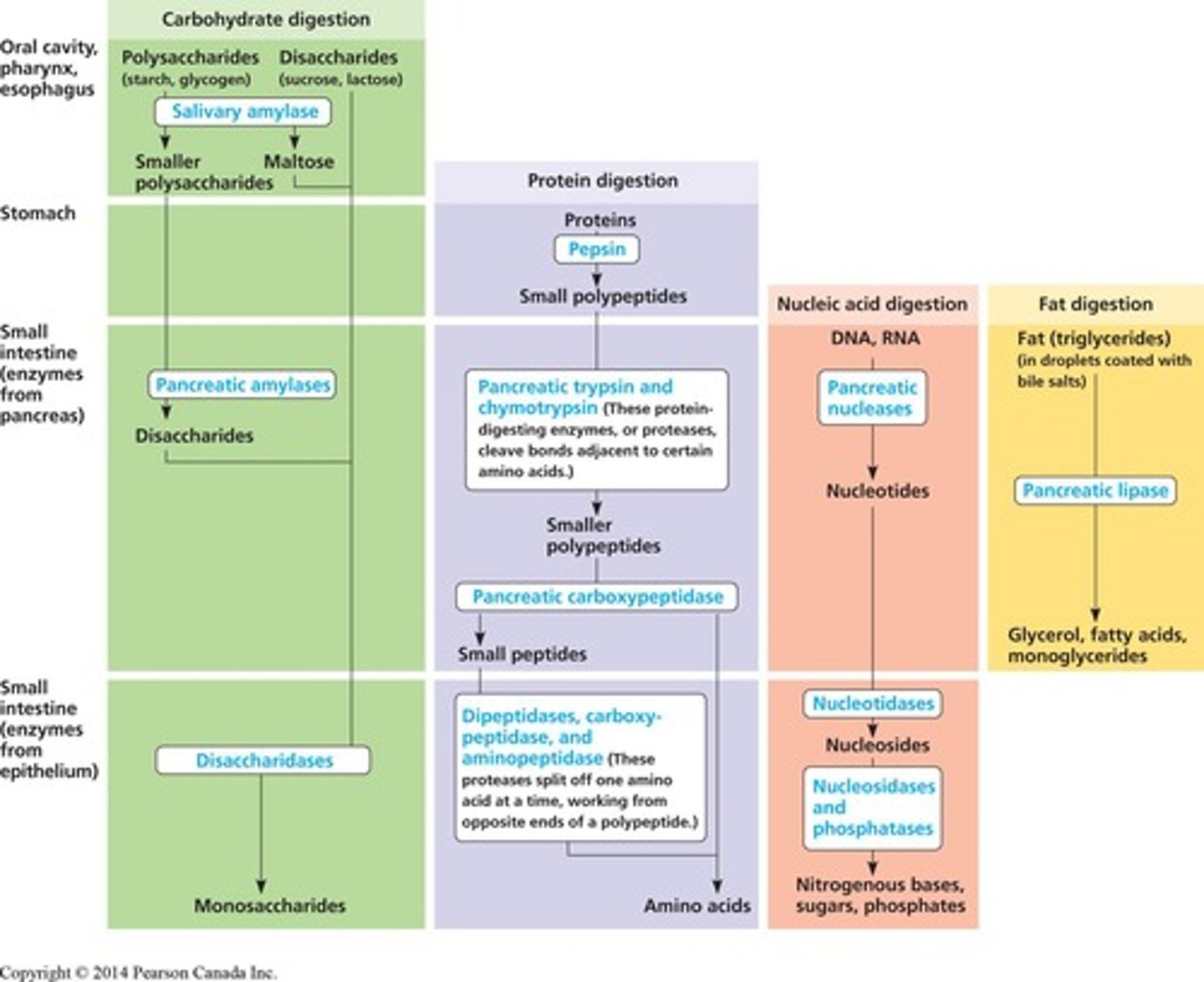Digestive Systems of Omnivores and Carnivores: Anatomy, Diet, and Microbial Fermentation
1/19
There's no tags or description
Looks like no tags are added yet.
Name | Mastery | Learn | Test | Matching | Spaced |
|---|
No study sessions yet.
20 Terms
What are the main nutrients that animals need?
Carbohydrates, Proteins, Fats, Minerals, and Vitamins.
What is the process of converting glucose to ATP called?
Cellular respiration.
How do ruminants differ from equids in plant digestion?
Ruminants digest plants before their stomach, while equids digest plants after their stomach.
What are omnivores?
Animals that eat both plants and animals.
What is a key characteristic of carnivores regarding their diet?
Carnivores are primarily meat eaters and have adaptations for digesting meat.
What is the significance of cellulose in plant cell walls?
Cellulose is a complex carbohydrate that is largely insoluble fiber and does not break down well in omnivore digestive systems.
What enzyme is required to digest cellulose?
Cellulase, which is found in microorganisms.

What role do microbes play in the large intestine of omnivores?
Microbes use cellulase to break down cellulose, producing volatile fatty acids (VFAs).
Why is the large intestine not an ideal fermenter for omnivores?
The microbial population is not ideal, and plant cellulose is not well broken down.
What methods can omnivores use to improve the digestibility of plant components?
Grinding, cooking, and processing plant materials.
What is gluconeogenesis?
The process of converting amino acids into glucose, primarily occurring in the liver.
What is the energy cost of gluconeogenesis compared to glycolysis?
Gluconeogenesis costs 6 ATP, while glycolysis costs 2 ATP and generates 4 ATP.
What is a characteristic of obligate carnivores?
They must eat meat to survive and are designed to metabolize meat protein rather than plants.

How do carnivores produce glucose if they consume little to no carbohydrates?
They produce glucose via gluconeogenesis, converting amino acids to glucose.

What is the role of amylase in carnivores?
Carnivores have low production of amylase, which is an enzyme that breaks down sugars.
What happens when omnivores consume plant material?
They may face digestive challenges due to the inability to effectively break down cellulose.
What are some examples of digestible plant components for omnivores?
Grains and processed plant components.
What adaptations do omnivores have for their varied diet?
Dental adaptations that allow them to process both plant and animal materials.
What is the significance of VFAs produced in the large intestine?
While they are not glucose, VFAs can still be utilized by omnivores for energy.
What is the primary function of the small intestine in digestion?
Absorption of nutrients from digested food.